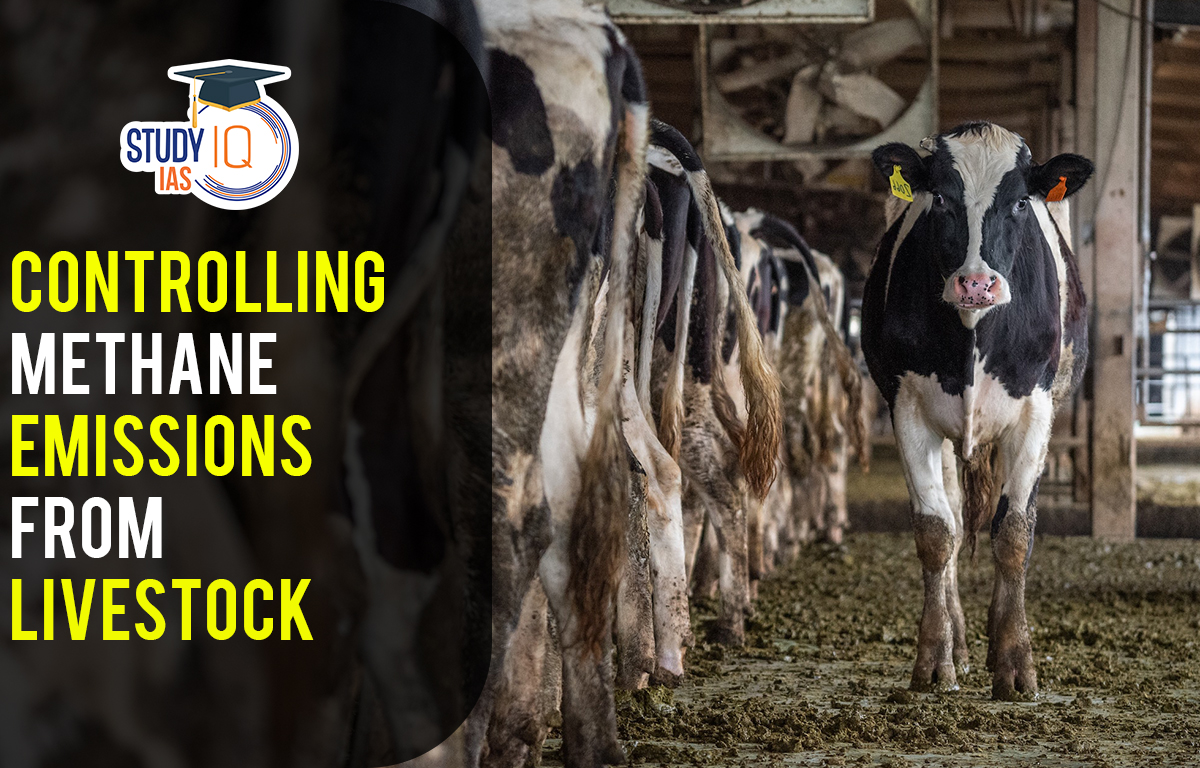Table of Contents
Need to Control Methane Emission
- About: Methane is a colourless and odourless gas that occurs abundantly in nature and as a product of certain human activities.
- According to US National Oceanic and Atmospheric Administration, human activity alone emitted 640 million tonnes of methane in 2021.
- According to NASA Earth Surface Mineral Dust Source Investigation instrument (EMIT), 50 “super-emitters” of heat-trapping methane gas were found in central Asia, the west Asia and the south-western United States.
- Most of these sites have ties with agriculture and fossil fuel industries.
- Methane is 84 times more potent than carbon, however, it stays in the atmosphere for only ten years.
- This makes it a critical target for reducing global warming more quickly while simultaneously working to reduce other greenhouse gases.
- This indicates that a significant decrease in methane emissions might sharply reduce anticipated global warming by the middle of the century.
- Furthermore, it would support the Paris Agreement’s aim of limiting the global average temperature increase to 1.5°C.

Feed Supplement to Reduce Methane Emission
- Feed supplement prepared by researchers targets the archaeal population, while boosting the growth of bacteria that are good at digesting feed.
- Supplement is a concoction of ingredients such as Indian cherry and Indian elm leaves, garlic oil, mustard oil, cottonseed oil, sodium nitrate and magnesium sulphate.
- Food supplement is considered ideal if it can lower methane emissions by at least 20 per cent.
Digestion in Ruminants
- Ruminants have specialised digestive systems comprised of stomachs that have four compartments instead of one.
- Ruminants are hoofed herbivorous grazing or browsing mammals that are able to acquire nutrients from plant-based food by fermenting it in a specialized stomach prior to digestion, principally through microbial actions.
- Plant material is initially taken to rumen, the largest compartment in the stomach that is inhabited by microorganisms such as fungi, bacteria, protozoa and archaea.
- These microorganisms break down the otherwise indigestible cellulose-rich plants to release protein and energy for their host animal in exchange for nutrition and shelter.
- But during this process (enteric fermentation), archaea microbe combines CO2 and hydrogen made by the cellulose-digesting microbes to create methane.
- This means the archaeal population and a diet rich in roughages dictate the amount of methane released by a ruminant.

Other Diet Specific Methods to Reduce Methane Emission
- Bovaer in EU:
- In 2021, the EU approved a feed supplement, Bovaer, developed by Dutch bioscience company Royal DSM.
- It consistently reduces methane emissions from dairy cows by 30-80 per cent.
- Bovaer is a fine granular powder containing 3-nitrooxypropanol, which inhibits an essential enzyme responsible for methane production.
- Utilisation of Seaweed in Diet:
- Seaweed, particularly Asparagopsistaxiformis, a red alga grown in tropical and subtropical waters is effective in controlling Methane Emission.
- A study records an 80 per cent decline in methane emissions in cattle raised for beef production.
- Seaweed did not displace microbes from the rumen, but they may have become less active.
- Concerns with Seaweed
- Health Concern: Seaweed appears to inhibit release of greenhouse gases through two chemicals, bromoform and bromochloromethane, which can induce cancer.
- Carbon Footprint: It is important for countries to rely on local ingredients, as shipping seaweed from one country to another to reduce methane, won’t make sense, given the higher carbon footprint of the shipping sectors
- Bad odour: Ruminants appears to dislike seaweed due to its objectionable odour.
- Regulatory Hurdle: In some countries like US, feed is treated as a drug. The product is vetted thoroughly and could take at least five years to get regulatory approval.
- Possibility of rumen microbes developing resistance to the supplement.
Steps taken to Reduce Methane Emission
- At COP26 in Glasgow, over 100 countries signed an agreement to cut methane emissions by 30% by 2030 as methane might be easier to deal with than carbon dioxide
- Global Methane Pledge: Countries agreed to take voluntary steps to reduce global methane emissions by 30 per cent from 2020 levels by the end of the decade.
- It could eliminate over 0.2˚C warming by 2050.
- India’s Initiative: Central Salt & Marine Chemical Research Institute (CSMCRI) in collaboration with the country’s three leading institutes developed a seaweed-based animal feed additive formulation that aims to reduce methane emissions from cattle and also boost immunity of cattle and poultry.


 World Population Day 2025, Themes, Histo...
World Population Day 2025, Themes, Histo...
 What are Polycyclic Aromatic Hydrocarbon...
What are Polycyclic Aromatic Hydrocarbon...
 Marlin Fish: Species, Features, Appearan...
Marlin Fish: Species, Features, Appearan...





















